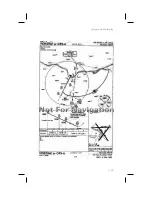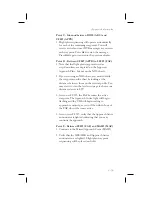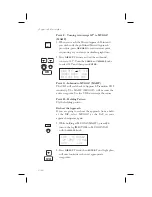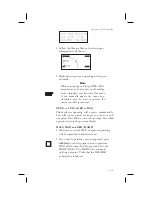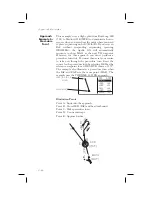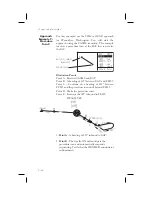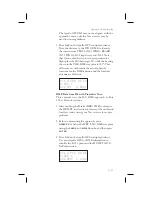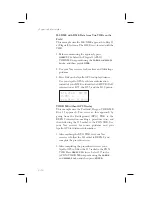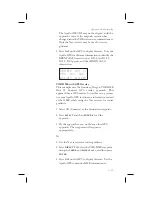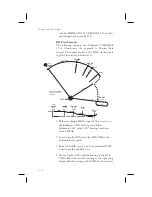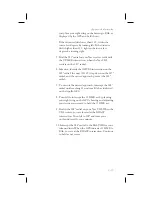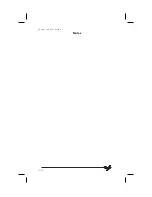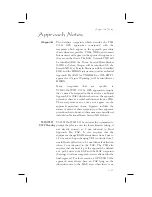
3.
Point C
- You will be prompted to enter the OBS
DTK when you near the FAF. Select an OBS
setting of 285° with the
LARGE
and
SMALL
knobs
and then press
ENTER
to select an inbound course.
Note that the CDI will be “reverse-sensing” just as
it would when outbound from a VOR with the
OBS set to the inbound course.
4.
Point D
- Make the procedure turn.
5.
Point E
- At the intercept of the inbound course to
the FAF you will receive a course intercept message
and sequencing will be automatically enabled.
Using the
LOC-DME
Waypoint
The Apollo GPS may be used to identify waypoints
that require DME distance information on an
instrument approach by using the LOC-DME as a
destination waypoint. The waypoint type is labeled
“LOC-DME,” which stands for the Localizer-DME
pair. Be careful when using this waypoint as the
Localizer location and the DME location are often in
separate locations. Also, the accuracy of the position
of the DME waypoint depends on the accuracy of the
information provided in the database. Your Apollo
GPS will use the DME location as the waypoint. Do
NOT use the DME location for course guidance. You
cannot activate an approach to a LOC-DME
waypoint, because it is not an airport.
You may use the LOC-DME waypoint as a guide to
identify DME-defined points on your approach and
as a distance reference point for a step-down
approach. The distance value will be accurate, but
the internal CDI will point to the DME antenna
location, not necessarily the runway centerline. Use
your Nav receiver for Localizer and Glideslope course
guidance. Use your Apollo GPS for distance
information to supplement your DME.
The LOC-DME will appear in its own category when
you perform the emergency search function.
9-69
Approach Examples
ENTER
Summary of Contents for Apollo GX50
Page 1: ......
Page 194: ...9 4 Approach Basics GX50 60...
Page 232: ...9 42 Approach Examples...
Page 240: ...9 50 Approach Examples...
Page 245: ...9 55 Approach Examples...
Page 266: ...Notes 9 76 Approach Examples...
Page 271: ...Charts have been reduced for illustrative purposes 9 81 Approach Notes...
Page 275: ...Reduced for illustrative purposes 9 85 Approach Notes...
Page 276: ...Charts have been reduced for illustrative purposes 9 86 Approach Notes...
Page 326: ...Notes 15 12 Glossary...
Page 335: ......

